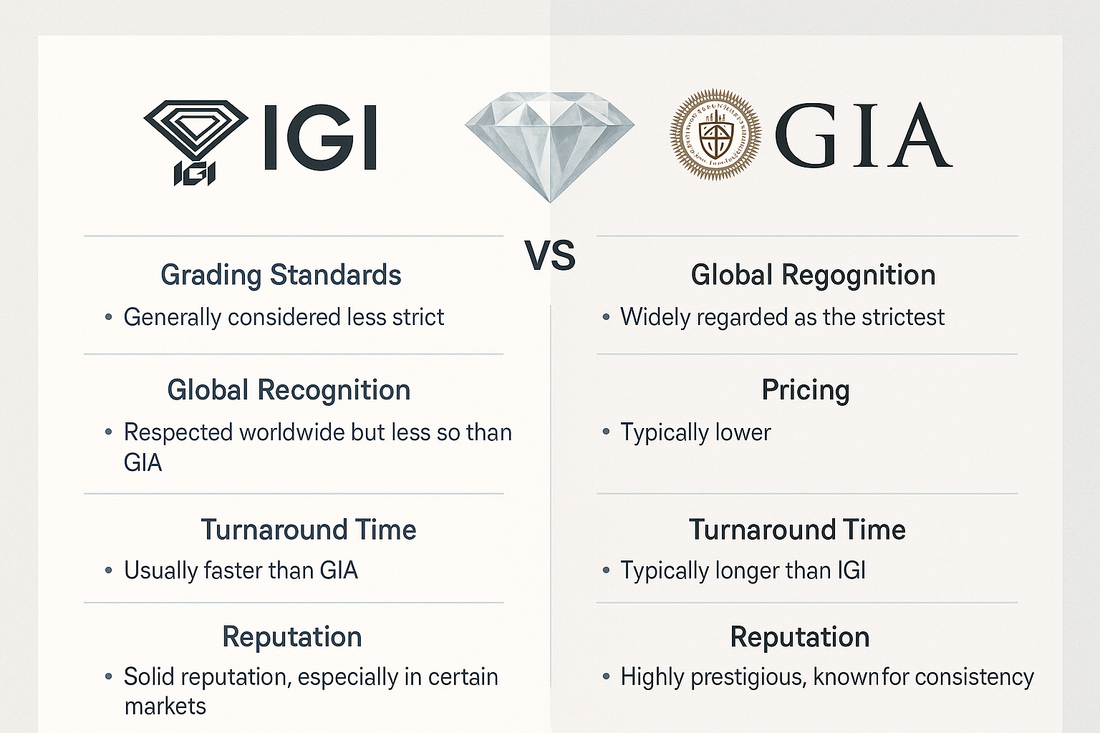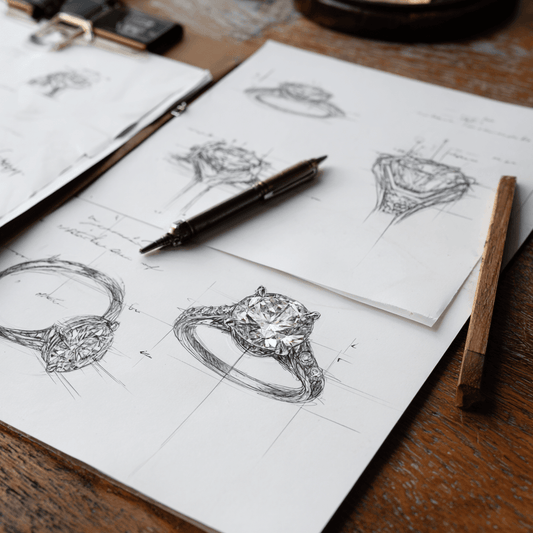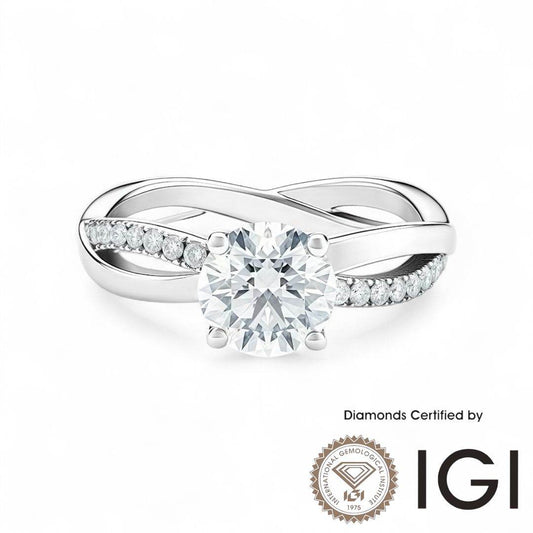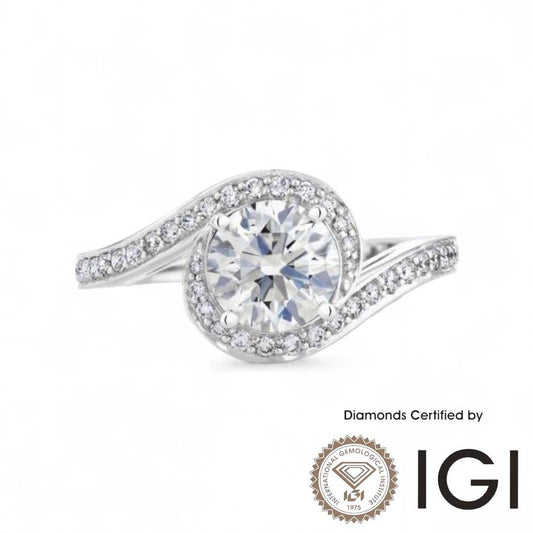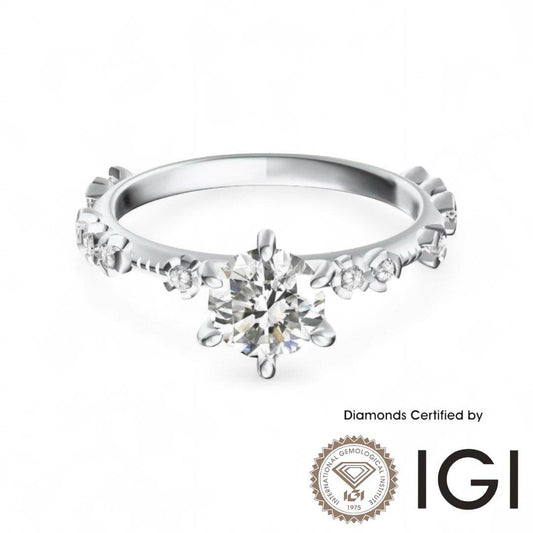IGI vs GIA: Choosing the Right Diamond Certification for Your Diamond
Diamond certification is as important as cut, clarity, color, and carat. This guide explains why IGI is the preferred choice for lab-grown diamonds, when to choose GIA for natural diamonds, and how to make informed, cost-effective choices.
1. Why Choose IGI for Lab-Grown Diamonds
The International Gemological Institute (IGI) is the leading certification for lab-grown diamonds. IGI has graded millions of lab-grown stones, giving them extensive expertise and exposure to this market.
- Cost-efficient: IGI certification is significantly cheaper than GIA, helping buyers optimize their budget.
- Faster turnaround: IGI provides quicker reports, which is ideal for timely purchases.
- Lab-grown expertise: IGI has deep experience with lab-grown diamonds, making its grading reliable for these stones.
To ensure eye-clean, high-quality diamonds, buyers should select diamonds graded at VVS2 or higher clarity and E or higher color. Lower grades such as VS1 or F color or below should be approached with caution, as they may appear lower quality than expected and have limited resale value.
2. Grading Comparison: How IGI vs GIA Differ
IGI grading is slightly more lenient than GIA. The table below shows approximate equivalents:
| GIA Grade | Approx. IGI Equivalent |
|---|---|
| SI1 | VS2 |
| VS2 | VVS2 |
| VVS2 | VVS1+ |
3. Feature Comparison: IGI vs GIA
This table highlights key differences between the two certification bodies:
| Feature | IGI | GIA |
|---|---|---|
| Primary Use | Lab-grown and natural diamonds | Natural diamonds |
| Clarity & Color Grading | Slightly lenient; VVS2+ and E+ recommended | Strict and conservative; accurate market value |
| Cost & Turnaround | Lower cost, faster | Higher cost, slower |
| Lab-Grown Expertise | Extensive experience and exposure | Limited |
| Market Recognition | Recognized, but lower grades have limited resale value | Highly trusted worldwide |
4. Why Choose VVS2+ Clarity and E+ Color for IGI Lab-Grown Diamonds
- Compensates for lenient grading: IGI grades are slightly more generous, so choosing higher clarity and color ensures the diamond is truly eye-clean and visually impressive.
- Maximizes visual quality: High clarity and color grades guarantee bright, flawless-looking diamonds.
- Optimizes cost: IGI certification is cheaper than GIA, so selecting higher grades ensures premium quality without the higher certification cost.
Caution: Avoid IGI diamonds with VS1 clarity or F color or below. These grades are not as strong as their GIA equivalents, may look lower quality in reality, and have lower market value. Always prioritize VVS2+ and E+ for the best balance of quality and cost efficiency.
5. GIA: The Gold Standard for Natural Diamonds
- Natural diamonds over 0.5 carats
- Investment-grade purchases with long-term resale value
- High-value diamonds where precise grading is critical
GIA ensures grading consistency and reliability, making it the preferred certification for natural diamonds worldwide.
Learn more at GIA Official Website.
6. Certificate Verification
- IGI Report Check: Verify IGI Certificates
- GIA Report Check: Verify GIA Certificates
7. Conclusion
- Lab-grown diamonds: IGI is the recommended certification. Always choose VVS2+ clarity and E+ color to ensure eye-clean, high-quality diamonds while optimizing certification cost. Avoid VS1 clarity or F color or below.
- Natural diamonds: GIA is the gold standard for accuracy, trust, and long-term value.
Smart certification choices help you maximize diamond quality while keeping costs optimized.
FAQ — IGI vs GIA Diamond Certification
Which certification is best for lab-grown diamonds?
IGI is the recommended certification for lab-grown diamonds due to their experience, cost efficiency, and faster turnaround. Always choose VVS2+ clarity and E+ color for optimal quality.
Should I use GIA for lab-grown diamonds?
GIA can certify lab-grown diamonds but it is more expensive and less commonly used for them. IGI has more experience with lab-grown diamonds, making it more suitable.
What grades should I look for with an IGI lab-grown diamond?
For IGI-certified lab-grown diamonds, aim for VVS2 or higher clarity and E or higher color. Avoid VS1 or F color or below, as they may appear lower quality and have lower market value.
When should I choose GIA?
GIA is the gold standard for natural diamonds, especially over 0.5 carats, or when precise grading and long-term resale value are important.
Disclaimer
This article is for informational purposes only. Diamond certifications, grading standards, and market practices can vary. Always consult a professional gemologist or authorized retailer before making high-value purchases.
Last updated: October 12, 2025.